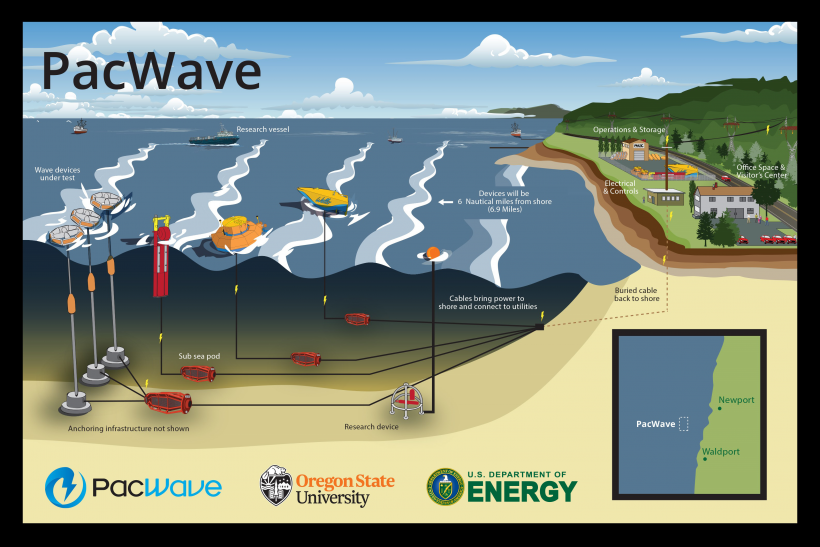How the U.S. Department of Energy is dedicating $27M to ocean wave energy
The power of the sea, producing power for humankind
On July 6, 2021, the DOE funded $27,000,000 to build ocean wave energy collectors to produce carbon-free electricity. What does this mean for our future towards net-zero carbon emissions? First, what even is ocean wave energy? Waves are created when wind travels over the surface of open water. A wave energy converter (WEC) is needed to convert waves into electricity. Doing this is difficult, however, in open sea, and only in 2016 was the first-in-the-nation PacWave South test facility WEC was built off the coast of Oregon.
“The ocean covers more than 70 percent of the surface of our planet, and we can capture the power of its waves, currents, and tides to help power our homes, buildings, and communities. As we transition to a 100 percent clean energy economy, marine energy has tremendous potential as one of the last untapped renewable energy sources, and Federal investment will help unlock it. This funding for research, development, and demonstration efforts at the PacWave testing facility will catalyze this promising industry and build on the innovation of Oregon State researchers and Oregon employers,” – Suzanne Bonamici (US Representative).
This form of energy will contribute positively to the climate change issue and can only be achieved by “unlocking it with federal investment.” The money will be spread out like this: $15,000,000 goes to testing WEC technologies at PacWave, $5,000,000 goes to advancing WEC technologies at PacWave, and the last $7,000,000 goes to wave energy development and research at PacWave. By helping out this cause, we will be one step closer to achieving renewable energy.
RELATED STORIES:
https://docs.niwa.co.nz/library/public/waveprimer.pdf
https://www.jdsupra.com/legalnews/the-potential-of-wave-power-9588054/
DOE to award $27M in funding to accelerate ocean wave energy technology















